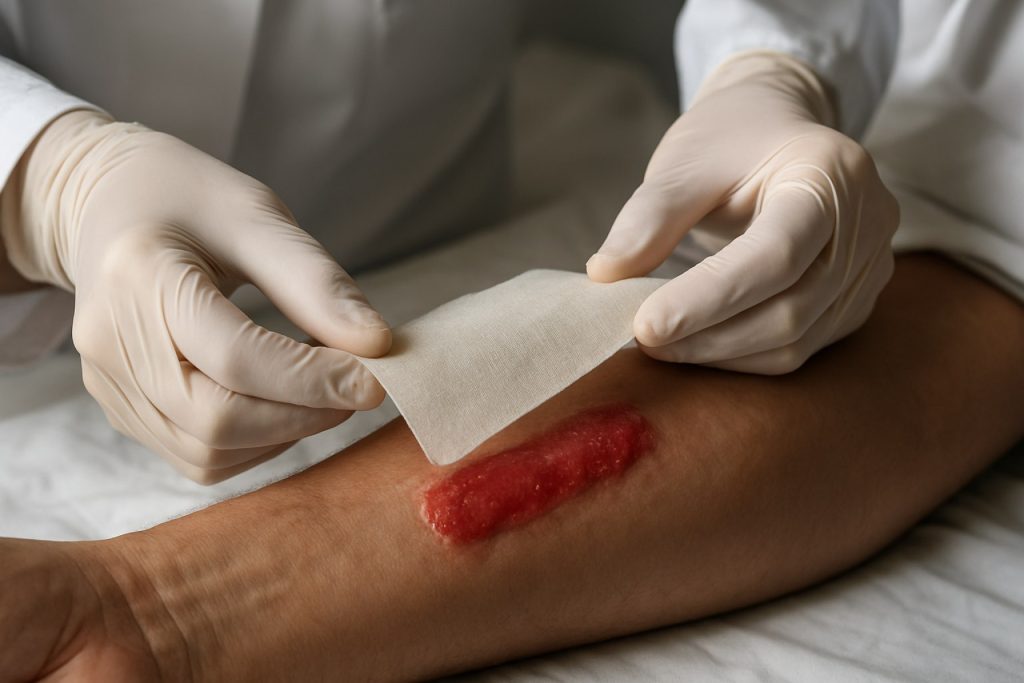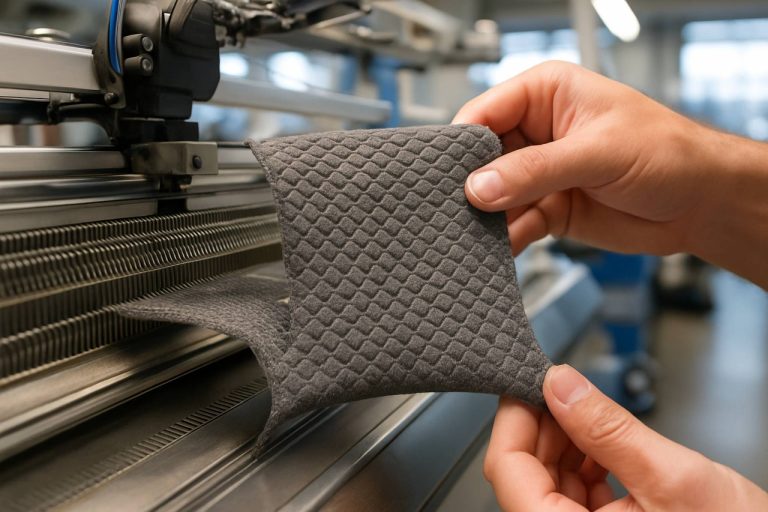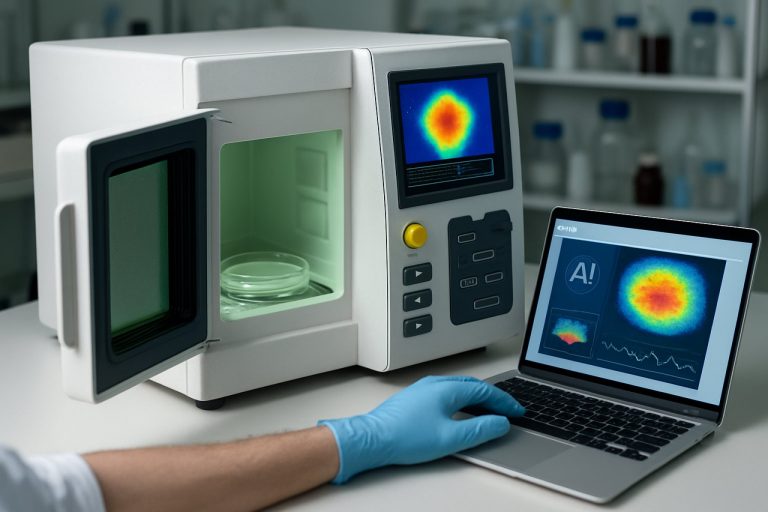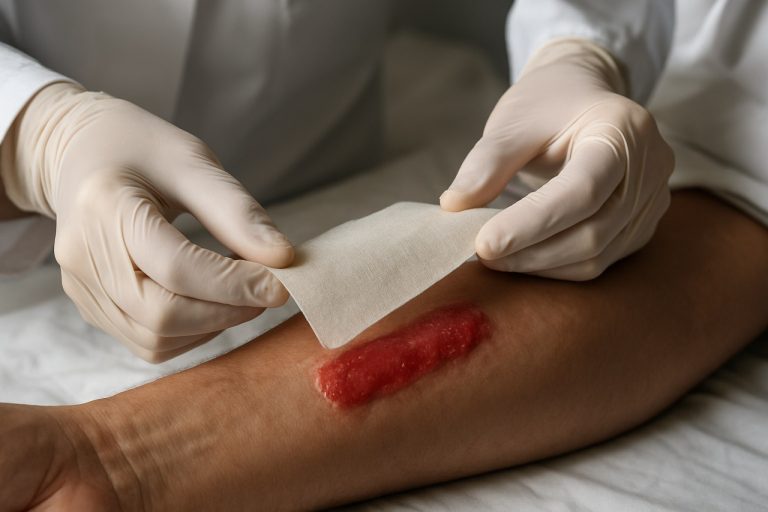
Nanocellulose Wound Care Technologies Market Report 2025: In-Depth Analysis of Growth Drivers, Innovations, and Global Opportunities. Explore Market Size, Key Players, and Forecasts Through 2030.
- Executive Summary & Market Overview
- Key Technology Trends in Nanocellulose Wound Care
- Competitive Landscape and Leading Players
- Market Size & Growth Forecasts (2025–2030)
- Regional Analysis: North America, Europe, Asia-Pacific & Rest of World
- Challenges, Risks, and Market Barriers
- Opportunities and Future Outlook for Nanocellulose Wound Care
- Sources & References
Executive Summary & Market Overview
Nanocellulose wound care technologies represent a rapidly advancing segment within the global advanced wound care market, leveraging the unique properties of nanocellulose—an ultra-fine, biocompatible, and highly absorbent material derived from plant cellulose or bacterial fermentation. In 2025, the market for nanocellulose-based wound dressings and related products is poised for significant growth, driven by increasing demand for innovative, sustainable, and effective wound management solutions.
Nanocellulose offers several advantages over conventional wound care materials, including superior moisture retention, enhanced mechanical strength, and the ability to promote faster healing while minimizing infection risks. These properties have led to its adoption in chronic wound management, burn care, and post-surgical applications. The global wound care market is projected to reach over $25 billion by 2025, with advanced wound care products—such as those utilizing nanocellulose—accounting for a growing share of this value MarketsandMarkets.
Key industry players are investing in research and development to optimize nanocellulose formulations and integrate antimicrobial agents, growth factors, and drug delivery capabilities. Notable collaborations between biotechnology firms, academic institutions, and healthcare providers are accelerating the commercialization of next-generation nanocellulose dressings. For example, companies like UPM-Kymmene Corporation and Axcelis Technologies are actively exploring nanocellulose applications in medical devices and wound care.
Regulatory approvals and clinical validation remain critical factors influencing market adoption. In 2025, several nanocellulose wound care products have received CE marking in Europe and are undergoing FDA review in the United States, reflecting growing confidence in their safety and efficacy U.S. Food and Drug Administration. Additionally, the sustainability profile of nanocellulose—being biodegradable and derived from renewable sources—aligns with global healthcare trends emphasizing environmentally responsible solutions.
- Market Drivers: Rising incidence of chronic wounds, aging populations, and increased healthcare spending.
- Challenges: High production costs, scalability issues, and regulatory hurdles.
- Opportunities: Expansion into emerging markets, integration with smart wound care technologies, and personalized medicine approaches.
In summary, nanocellulose wound care technologies are set to transform the wound management landscape in 2025, offering a compelling combination of clinical performance, patient comfort, and sustainability. The sector is expected to witness robust investment, product launches, and strategic partnerships as it moves toward mainstream adoption.
Key Technology Trends in Nanocellulose Wound Care
Nanocellulose wound care technologies are at the forefront of innovation in advanced wound management, leveraging the unique properties of nanocellulose—such as high surface area, biocompatibility, and excellent moisture retention—to enhance healing outcomes. In 2025, several key technology trends are shaping the development and adoption of nanocellulose-based wound care products.
- Bioactive and Functionalized Nanocellulose Dressings: The integration of bioactive agents, such as antimicrobial peptides, silver nanoparticles, and growth factors, into nanocellulose matrices is a significant trend. These functionalized dressings not only provide a physical barrier but also actively promote healing and reduce infection rates. Companies are increasingly focusing on the controlled release of these agents to optimize therapeutic efficacy and minimize cytotoxicity (Frost & Sullivan).
- 3D-Printed and Customized Wound Care Solutions: Advances in 3D bioprinting are enabling the fabrication of patient-specific nanocellulose wound dressings. This technology allows for precise control over the architecture and porosity of the dressing, improving fit and comfort while supporting tissue regeneration. The customization potential is particularly valuable for chronic and complex wounds (IDTechEx).
- Smart and Responsive Nanocellulose Dressings: The development of smart wound dressings that can monitor wound conditions (such as pH, temperature, and moisture) and respond accordingly is gaining momentum. Incorporating sensors and responsive polymers into nanocellulose scaffolds enables real-time wound monitoring and on-demand drug delivery, which can significantly improve patient outcomes (MarketsandMarkets).
- Sustainable and Green Manufacturing: With increasing emphasis on sustainability, manufacturers are adopting eco-friendly production methods for nanocellulose, often utilizing renewable sources such as wood pulp or agricultural waste. This not only reduces the environmental footprint but also aligns with regulatory and consumer preferences for greener healthcare products (Grand View Research).
These technology trends are driving the rapid evolution of nanocellulose wound care, positioning it as a disruptive force in the global advanced wound care market. As research and commercialization efforts intensify, the sector is expected to witness accelerated adoption and expanded clinical applications through 2025 and beyond.
Competitive Landscape and Leading Players
The competitive landscape for nanocellulose wound care technologies in 2025 is characterized by a mix of established medical device companies, innovative startups, and academic spin-offs, all vying for leadership in a rapidly evolving market. The sector is driven by the unique properties of nanocellulose—such as high biocompatibility, mechanical strength, and moisture retention—which make it an attractive material for advanced wound dressings and tissue engineering applications.
Key players in this space include UPM-Kymmene Corporation, which has leveraged its expertise in cellulose-based materials to develop nanocellulose dressings under the UPM Biomedicals division. Their GrowDex® hydrogel platform is being adapted for wound care, offering a biocompatible and customizable solution for chronic and acute wounds. Another significant player is AxcelGraft, a company focused on nanocellulose-based scaffolds for wound healing and regenerative medicine, with several products in late-stage clinical trials as of 2025.
In the startup ecosystem, FiberCell and CelluForce are notable for their proprietary nanocellulose production technologies and partnerships with healthcare providers. These companies are actively collaborating with research institutions to accelerate product development and regulatory approval. Additionally, Sappi Limited has expanded its nanocellulose portfolio, targeting both wound care and broader biomedical applications, leveraging its global manufacturing footprint to scale production.
Academic spin-offs, such as those from Aalto University and Chalmers University of Technology, are contributing to the competitive landscape by commercializing novel nanocellulose formulations and delivery systems. These entities often collaborate with larger firms for clinical validation and market entry.
Strategic partnerships, licensing agreements, and mergers and acquisitions are common as companies seek to expand their technological capabilities and market reach. The competitive intensity is further heightened by ongoing research into functionalized nanocellulose—such as antimicrobial or drug-loaded variants—which could offer significant differentiation in the wound care market. As regulatory pathways become clearer and clinical evidence mounts, the market is expected to see increased product launches and broader adoption, particularly in North America and Europe, where reimbursement frameworks are evolving to support advanced wound care technologies.
Market Size & Growth Forecasts (2025–2030)
The global market for nanocellulose wound care technologies is poised for robust expansion between 2025 and 2030, driven by increasing demand for advanced wound management solutions and the unique properties of nanocellulose materials. In 2025, the market is estimated to be valued at approximately USD 180–200 million, with projections indicating a compound annual growth rate (CAGR) of 18–22% through 2030. This growth trajectory is underpinned by the rising prevalence of chronic wounds, such as diabetic ulcers and pressure sores, and the growing adoption of bio-based, sustainable wound care products.
Nanocellulose, derived from plant-based sources or bacterial fermentation, offers exceptional biocompatibility, high absorbency, and the ability to promote moist wound healing—attributes that are increasingly sought after in next-generation wound dressings. The integration of nanocellulose into wound care products is expected to accelerate, particularly in North America and Europe, where regulatory approvals and reimbursement frameworks are more established. According to Grand View Research, the broader nanocellulose market is experiencing significant momentum, with medical applications representing a rapidly growing segment.
By 2030, the nanocellulose wound care technologies market is forecasted to reach USD 400–450 million, fueled by ongoing R&D investments, strategic partnerships between biotechnology firms and medical device manufacturers, and the introduction of novel products targeting both acute and chronic wound indications. The Asia-Pacific region is anticipated to witness the fastest growth, attributed to expanding healthcare infrastructure, rising awareness of advanced wound care, and increased government initiatives supporting bio-based medical technologies.
- Key growth drivers (2025–2030):
- Escalating incidence of diabetes and related chronic wounds
- Shift toward sustainable, biodegradable wound care materials
- Technological advancements in nanocellulose production and functionalization
- Favorable regulatory pathways and increased clinical validation
Major industry players, including UPM-Kymmene Corporation and AxcelGraft, are intensifying their focus on nanocellulose-based wound care portfolios, signaling strong commercial interest and competitive activity. As clinical evidence supporting the efficacy and safety of nanocellulose wound dressings continues to mount, the market is expected to transition from early adoption to mainstream acceptance by the end of the decade.
Regional Analysis: North America, Europe, Asia-Pacific & Rest of World
The regional landscape for nanocellulose wound care technologies in 2025 is shaped by varying levels of technological adoption, healthcare infrastructure, and regulatory environments across North America, Europe, Asia-Pacific, and the Rest of the World (RoW).
- North America: North America, led by the United States, remains at the forefront of nanocellulose wound care technology adoption. The region benefits from robust R&D investments, a high prevalence of chronic wounds, and a well-established healthcare system. Key players such as U.S. Food and Drug Administration (FDA) have streamlined regulatory pathways for advanced wound care products, accelerating market entry. The presence of leading research institutions and collaborations between academia and industry further drive innovation. According to Grand View Research, North America accounted for over 35% of the global advanced wound care market share in 2024, with nanocellulose-based dressings gaining traction in both hospital and home care settings.
- Europe: Europe is characterized by strong regulatory support for sustainable and biocompatible medical materials, aligning with the region’s focus on green healthcare solutions. Countries such as Germany, Sweden, and Finland are notable for their investments in nanocellulose R&D, leveraging their established pulp and paper industries. The European Commission has funded several initiatives to promote bio-based medical technologies, fostering a favorable environment for market growth. The region’s aging population and high incidence of diabetes-related wounds further fuel demand for advanced wound care products.
- Asia-Pacific: The Asia-Pacific region is witnessing rapid growth, driven by expanding healthcare infrastructure, rising awareness of advanced wound care, and increasing government investments in biotechnology. Countries like Japan and China are emerging as significant markets, with local manufacturers scaling up production of nanocellulose materials. According to MarketsandMarkets, Asia-Pacific is projected to register the highest CAGR in the nanocellulose wound care segment through 2025, supported by favorable reimbursement policies and a growing patient pool.
- Rest of the World (RoW): In regions such as Latin America, the Middle East, and Africa, adoption of nanocellulose wound care technologies remains nascent but is expected to grow as healthcare systems modernize. International aid programs and partnerships with global health organizations are facilitating technology transfer and capacity building. However, challenges such as limited regulatory frameworks and cost constraints may temper short-term growth.
Overall, while North America and Europe lead in innovation and adoption, Asia-Pacific is poised for the fastest expansion, and RoW regions represent emerging opportunities as access to advanced wound care improves globally.
Challenges, Risks, and Market Barriers
Nanocellulose wound care technologies, while promising significant advancements in wound management, face a range of challenges, risks, and market barriers that could impede their widespread adoption by 2025. One of the primary challenges is the scalability of nanocellulose production. Although laboratory-scale synthesis has demonstrated efficacy, transitioning to industrial-scale manufacturing remains complex and cost-intensive. The high costs associated with raw materials, purification processes, and quality control can limit the commercial viability of nanocellulose-based wound dressings, especially when compared to established alternatives such as hydrocolloids and alginates (Grand View Research).
Regulatory hurdles also present significant risks. Nanocellulose is a relatively new material in the medical field, and regulatory agencies such as the U.S. Food and Drug Administration (FDA) and the European Medicines Agency (EMA) require comprehensive safety and efficacy data before approving new wound care products. The lack of standardized testing protocols and long-term biocompatibility studies can delay product approvals and market entry (U.S. Food and Drug Administration). Furthermore, the classification of nanocellulose as a novel biomaterial may necessitate additional toxicological assessments, increasing time-to-market and development costs.
- Market Acceptance: Healthcare professionals and patients may be hesitant to adopt nanocellulose-based products due to limited clinical evidence and unfamiliarity with the technology. Building trust and demonstrating clear advantages over conventional wound care solutions are essential for market penetration.
- Supply Chain Constraints: The supply chain for nanocellulose is still developing, with few established suppliers capable of meeting medical-grade standards. This can lead to inconsistent product quality and supply shortages, further hindering adoption (MarketsandMarkets).
- Intellectual Property (IP) and Competition: The competitive landscape is rapidly evolving, with numerous patents filed for nanocellulose formulations and applications. Navigating the IP landscape can be challenging for new entrants and may result in legal disputes or licensing costs (World Intellectual Property Organization).
In summary, while nanocellulose wound care technologies offer substantial potential, overcoming production, regulatory, market acceptance, supply chain, and IP-related barriers will be critical for their successful commercialization and integration into mainstream wound care by 2025.
Opportunities and Future Outlook for Nanocellulose Wound Care
Nanocellulose wound care technologies are poised for significant growth and innovation in 2025, driven by the material’s unique properties and the increasing demand for advanced wound management solutions. Nanocellulose, derived from plant-based or bacterial sources, offers high biocompatibility, excellent moisture retention, and a customizable structure, making it an ideal candidate for next-generation wound dressings and scaffolds.
One of the primary opportunities lies in the development of smart wound dressings that leverage nanocellulose’s ability to be functionalized with antimicrobial agents, growth factors, or sensors. These advanced dressings can provide real-time monitoring of wound conditions, such as pH or infection markers, and deliver targeted therapeutics, thereby improving healing outcomes and reducing the risk of complications. The integration of nanocellulose with digital health platforms is expected to accelerate, aligning with broader trends in personalized and remote healthcare management.
Market expansion is also anticipated in the chronic wound care segment, particularly for diabetic ulcers, pressure sores, and burns. The global prevalence of diabetes and an aging population are increasing the incidence of chronic wounds, creating a robust demand for innovative solutions. Nanocellulose-based products, with their superior moisture management and ability to promote tissue regeneration, are well-positioned to capture a significant share of this market. According to Grand View Research, the global wound care market is projected to reach over $25 billion by 2025, with advanced dressings representing a substantial portion of this growth.
Furthermore, sustainability is becoming a key differentiator in the wound care industry. Nanocellulose is biodegradable and can be sourced from renewable materials, aligning with the increasing emphasis on environmentally friendly medical products. This positions nanocellulose technologies favorably with both regulators and consumers seeking greener healthcare solutions.
Looking ahead, ongoing research and collaboration between academic institutions, biotechnology firms, and medical device manufacturers are expected to yield new formulations and applications. Companies such as UPM and AxcelGraft are actively investing in nanocellulose-based wound care products, signaling strong industry commitment. Regulatory approvals and clinical validation will be critical in 2025, as more products move from the laboratory to the marketplace, shaping the future landscape of wound care technologies.
Sources & References
- MarketsandMarkets
- UPM-Kymmene Corporation
- Axcelis Technologies
- Frost & Sullivan
- IDTechEx
- Grand View Research
- FiberCell
- CelluForce
- Aalto University
- Chalmers University of Technology
- European Commission
- World Intellectual Property Organization



